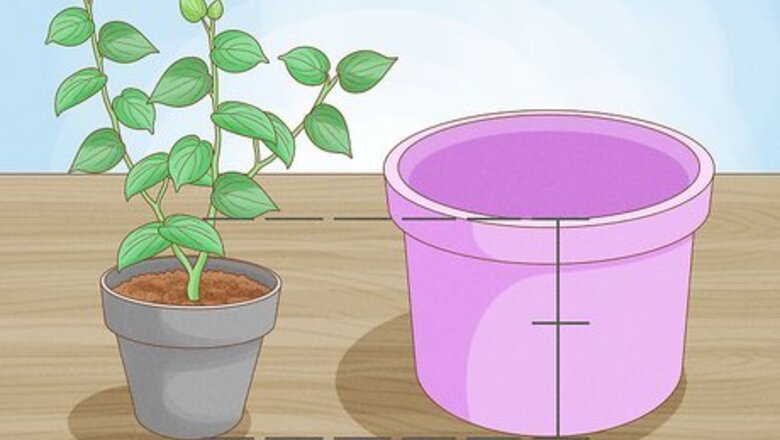
views
Transferring Jalapeno Plants to a Pot
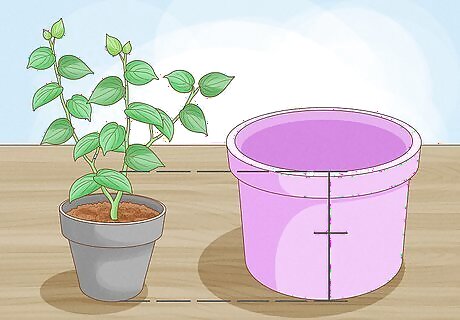
Choose a pot that’s twice as wide and deep as the nursery pot. This will give the plant plenty of room to grow and spread its roots. Jalapenos need to be replanted several times, so be prepared to transfer the plant a few times. Make sure the pot you use has proper drainage holes.

Fill the pot with organic potting soil. You can find organic potting soil at your local garden or home improvement store. Fill the pot at least halfway full of potting soil to start with, and then you can rearrange the soil once you add in the plant. You can add a little bit of compost to the soil for nutrients, if desired.
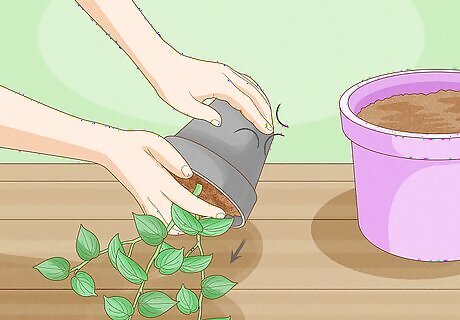
Remove the jalapeno plant from the nursery pot. Gently pull the root ball out of the nursery container, making sure not to pull on the stem. Give the root ball a couple of squeezes with your hand to loosen up the soil and roots.
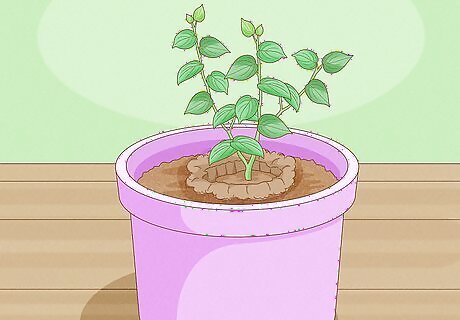
Situate the plant in the new pot and add more soil. Place the root ball down in the pot, making sure the top of the root ball is almost level with the top of the pot. Add in more potting soil around the root ball using your hands or a shovel until the pot is mostly full. Be careful not to damage the roots when you’re arranging the soil in the pot, especially if you’re using a shovel.
Maintaining Your Potted Peppers
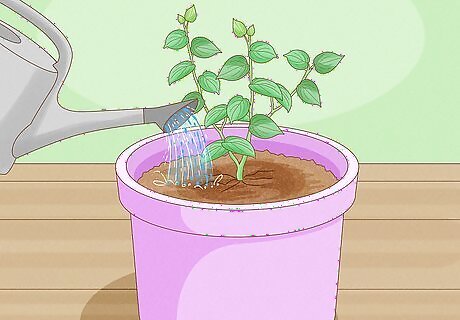
Water the plant after you've added soil. The water will help compress the soil naturally so you can see how much more soil you need to add. You can use a cup or small watering can to dampen the soil.
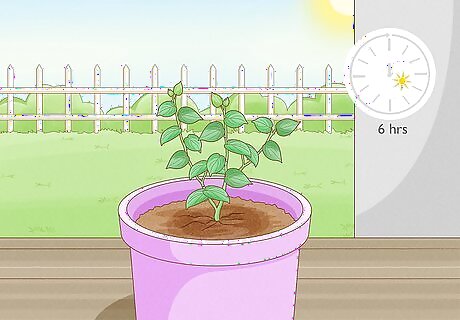
Set the pot in a place with access to at least 6 hours of full sun. Jalapeno plants love being in full sunlight, so place them somewhere that receives at least 6 hours of sunlight a day. This can be outside, or it can be on a windowsill that gets lots of indirect sunlight throughout the day.
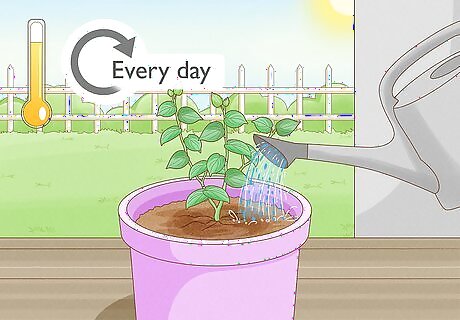
Keep the soil moist, especially during warmer weather. It’s important to keep the soil damp without letting it get soggy. Water the plant whenever the soil feels dry—if it’s hot outside, the plant may need water every day. Make sure the pot has proper air ventilation holes so that water can drain easily if needed. To see if the plant is too dry, try tilting the pot to the side to see how much it weighs. If it feels super light, the plant is too dry and needs more water.
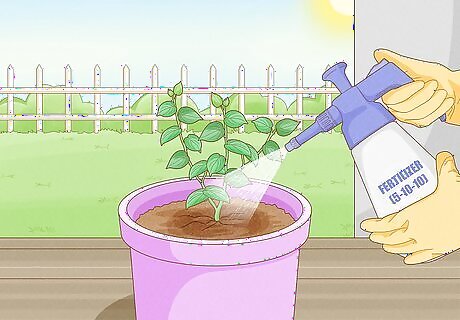
Use liquid fertilizer to help the jalapeno plant grow. If you want to use a fertilizer on your jalapeno plants, try out a water-soluble liquid plant food. Most organic fertilizers that you would use on tomatoes should work well with jalapeno plants. A 5-10-10 fertilizer is good for jalapeno plants. If the plant is underfed, it will have pale green leaves and won’t have very much new growth.
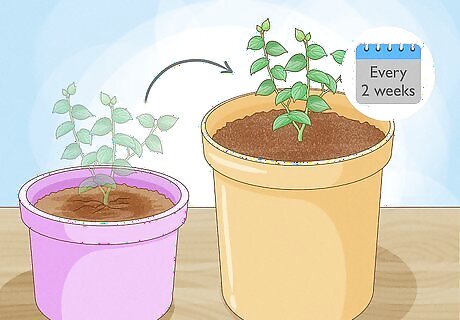
Repot the plant roughly every 2 weeks as it gets bigger. Jalapeno plants grow quickly, and you’ll need to switch out the pots when the plant outgrows each one. When you do repot the plant, make sure there’s at least 2 inches (5.1 cm) of space on each side of the plant so that it has plenty of room in the pot. Repotting the plant each time it grows as opposed to just planting it in a large pot is important so that you prevent overwatering and/or adding too much fertilizer. Try not to damage the roots each time you repot the jalapeno plant.
Starting Jalapenos from Seed
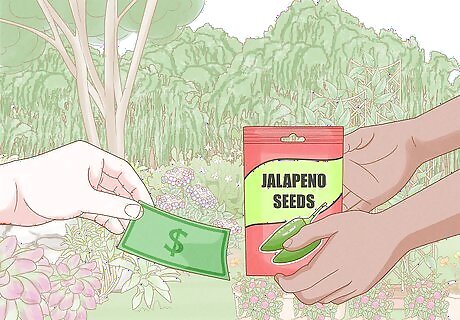
Purchase jalapeno seeds or use seeds from your own jalapenos. You can find jalapeno pepper seeds at a garden or home improvement store, as well as online. If you already have a jalapeno plant, you can cut open a mature pepper and use those seeds for planting.
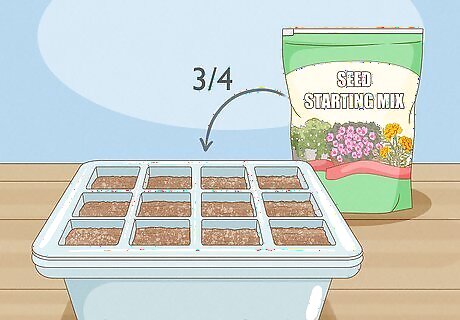
Fill a seed tray with seed-starting mix. You can find a seed-starting mix at your local garden or home improvement store, as well as seed trays perfect for starting small seedlings. Fill each space in the seed tray about ¾ of the way full with the soil.
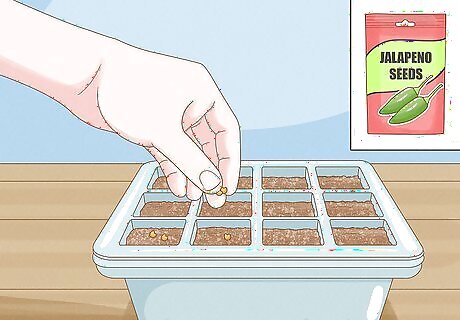
Place 1-3 seeds in each seed tray. Pour the jalapeno seeds into your palm and drop a few into each section of the seed tray. Try to space them evenly so that they’re not on top of each other, even if they don’t all grow. You don’t need to push them down into the soil, just place each one in the soil gently.
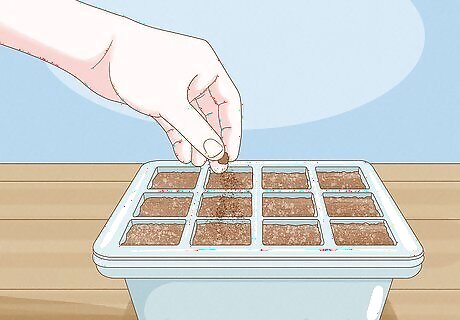
Cover the seeds with a thin layer of soil. A fine sprinkling of soil will do—you just want the seeds covered with a light layer of soil so that water or wind doesn’t move them. Use the same soil that you used to fill the seed tray.
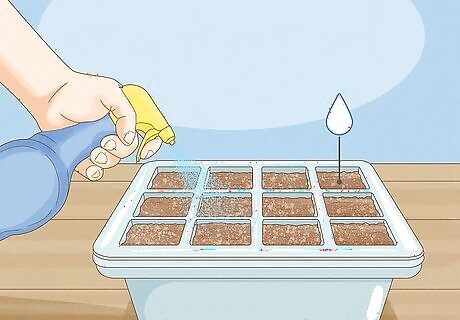
Mist the soil with water when it becomes dry. While you don’t want to drench the seeds in water, they’ll need to be properly hydrated in order to grow. Use a spray bottle to dampen the soil after the seeds are planted, and check the soil each day to make sure it isn’t dry. Make sure the seed trays have proper air ventilation so that the soil doesn’t become soggy.
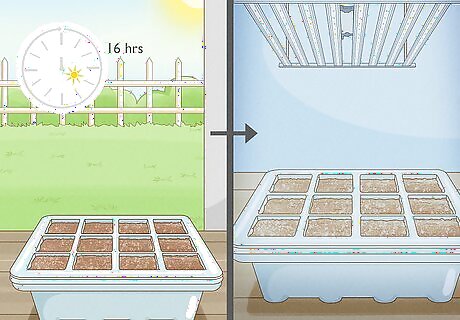
Expose the seeds to light for up to 16 hours a day. If you live in a climate that gets lots of warm sun, put the seed trays near a windowsill so that they can get sunlight. You can also use artificial light from lamps to heat up the seeds and help them grow, if necessary. If you’re going to use artificial lighting, hang growing lights 2–4 inches (5.1–10.2 cm) above the plants. If you notice the seedling starting to wilt, the lights may be too close.
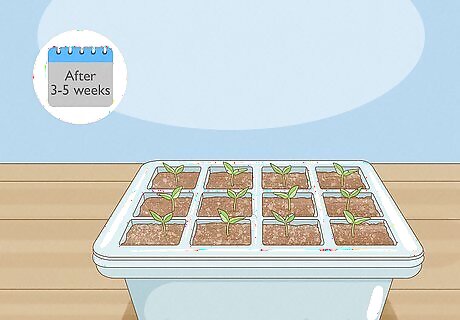
Wait 3-5 weeks for the seeds to germinate. How long it takes for the seeds to germinate will depend on the growing conditions, such as the amount of sunlight, water, and soil temperature. By 5 weeks, your seeds should have started growing into small seedlings. Some types of jalapeno seeds only take about 10 days to germinate, so keep an eye on your plant daily to check for progress.
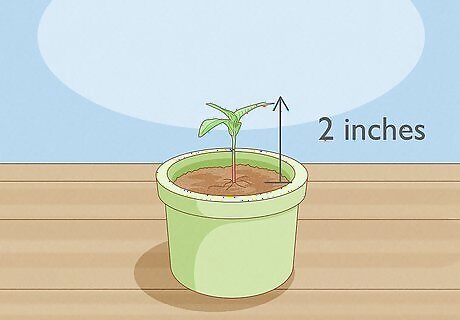
Transfer the plant to a larger pot when it’s at least 2 inches (5.1 cm) tall. When it has reached this height, it’s strong enough to be moved to a larger pot for more growing space. Use nutrient-rich potting soil when you transfer the plant, and make sure to give it full sunlight and plenty of water. Another way to tell if the plant is ready to be repotted is to look for at least 4 leaves.














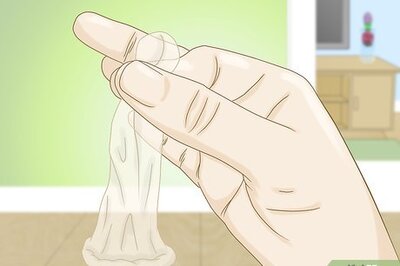



Comments
0 comment